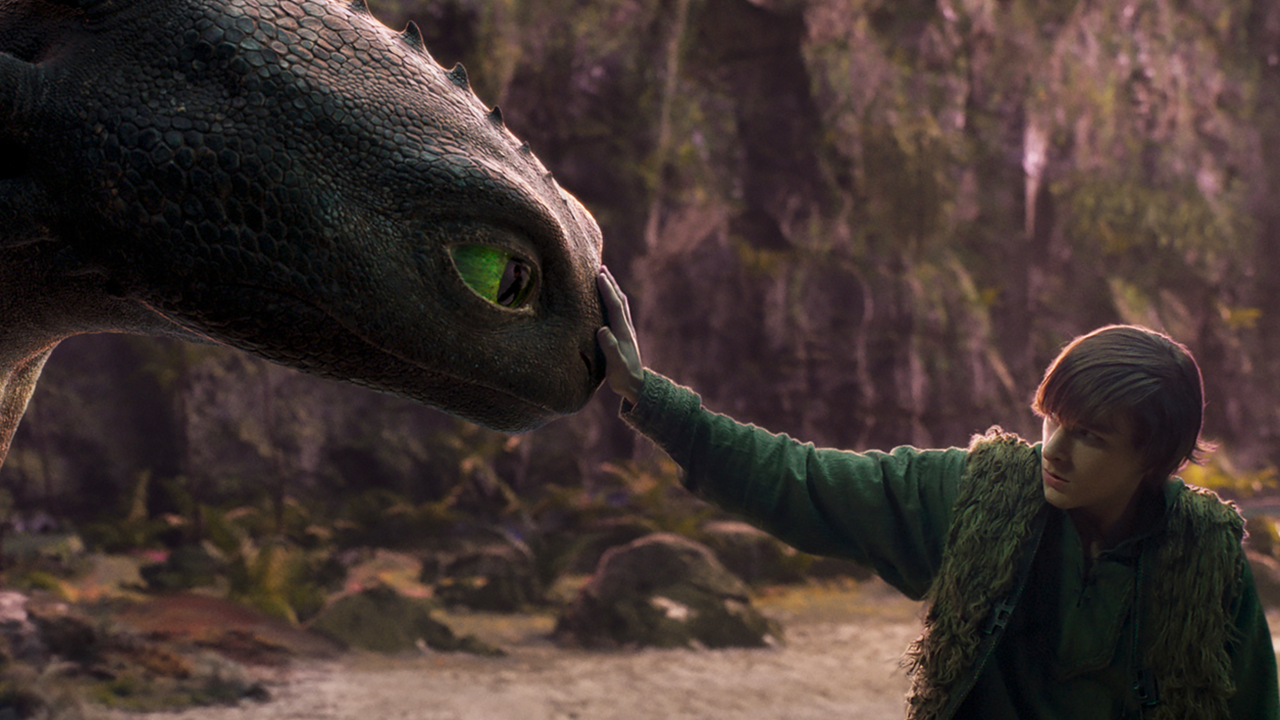
“Let’s do things differently this time,” says Gwen Stacy at the beginning of Spider-Man: Across the Spider-Verse. The words kick off a three-minute monologue in which she recaps the previous film’s events and anticipates some of the twists and turns of the sequel, all the while playing an increasingly loud drum solo. Eventually, she’s interrupted by her bandmate Mary Jane. “Yo, Deaf Leppard,” Mary Jane says, as a nod to the classic rock band.
You get a different reference if you’re watching with Latin American Spanish subtitles, though. Doing a one-to-one translation would have confused audiences unfamiliar with the band, especially as a quick throwaway joke that isn’t referenced again. So Miguel Reyes Aldasoro, a translator at Voice and Script International Mexico, knew he had a challenge in front of him.
“Without giving any context about the project, I asked my girlfriend for help to find Latin American bands that had something to do with deafness,” Aldasoro told Polygon. “It also got to me personally as a drummer; whenever you mess up during rehearsals, people often say, ‘What, are you deaf?’ Maintaining the word was very important in the context of a band.”

This week on Polygon, we’re looking at how cultural differences affect media in a special issue we’re calling Culture Shock.
In the end, Aldasoro decided on “Sorda Stereo,” mimicking the original wordplay with the feminine of “deaf” in Spanish (“sorda”) and the Argentine rock band Soda Stereo. The reasoning went beyond just finding a suitable match. Aldasoro thought the band’s popularity across the region made it a good replacement for Def Leppard.
“I remember talking to the studio that translated Shrek, which included many jokes that are not only local to Mexico but are also old by now,” he said. “People nowadays can’t understand a reference to a show that hasn’t been on the air for decades. Soda Stereo is a band that people will continue to listen to, and the translation will continue to work because of it.”
Whether it’s a throwaway joke or a word change to accommodate a nonbinary character, Latin American translators are perpetually thinking about the possible impact of seemingly small decisions. Polygon recently spoke to Aldasoro (Beetlejuice Beetlejuice, Dune: Part Two, Oppenheimer), Sandra Brizuela (Gravity Falls, High School Musical), Alejandra Valdez (formerly of Paramount, ViacomCBS, and MTV), and José Negrete (One Piece, Kraven the Hunter, Venom: The Last Dance) to learn more about the challenges specific to Latin American translations.

An ever-changing standard
When adapting international media to local audiences, Latin American translators have traditionally abided by a standardized version of Spanish, as the language is far from unified across countries, provinces, and demographics. Neutral Spanish, a term that often refers to a version of Mexican Spanish that largely excludes slang and regional idioms to avoid alienating Spanish speakers, has long been the predominant model, acting as a catch-all for Latin America in general.
Yet, thanks to the increasing presence of social media as well as cultural norms evolving, the details involved with Neutral Spanish are constantly changing.
Media Access Company transcreation supervisor for Latin American Spanish Sandra Brizuela recalls how she used to have internal debates around the word “cupcake,” which could be translated to “muffin,” “pastelillo” (little cake), “budincillo” (little pudding), or other terms. Nowadays, she says it’s more common to default to cupcake or muffin, despite those being English words, as they’re terms that people have grown accustomed to.

“When I started, the idea of Neutral Spanish was very limited, and thankfully that concept has been broadening,” said Aldasoro, who has spent time traveling and seen firsthand how different versions of Spanish are more similar than they are different. “Thanks to social media allowing for more contact with others, it makes it so [it doesn’t feel like] different countries, but almost different cities coexisting in one single country.”
“I think Neutral Spanish is something that doesn’t really exist [in the real world], so the language used in dubbing [years back] was very limited and didn’t sound natural,” VSI production manager José Negrete said. “Even if it’s OK for all of us to speak Spanish differently, it’s not like you won’t understand it. It’s more about aiming for a good adaptation and transmitting the message of the original source. If we see a film in Spanish from Spain, there may be one or two words I don’t understand, and that’s OK. We all have our phones and can Google them.”
Language’s natural evolution has also led to more prominent considerations around gendered words, as Spanish makes a distinction between male and female for certain words. As people continue to fight for recognition of gender-neutral terms — which are still rejected by the Royal Spanish Academy, despite it recognizing “no binario” (nonbinary) and “disforia de género” (gender dysphoria) in November 2023 — communities across Latin America have been pushing for different variations. Words such as “Latino,” for example, can be written as “Latin@,” “Latinx,” or “Latine” to accommodate for more than just the masculine term.
As of now, there aren’t set rules for the official translation of gender-neutral terms, with companies having different preferences for each new project. For the character of Raine Whispers in The Owl House, who’s nonbinary, Media Access asked Disney about its preferences. The directive was to adapt sentences in a way that they could apply to both the masculine and feminine genders. For example, if somebody said “You’re very smart,” the most direct translation might be “Eres muy listo,” but “listo” is a gendered word for “smart” in Spanish (masculine, in this case). Instead, the team would adapt it to “Eres muy inteligente” (“You’re very intelligent”), since “inteligente” is a close synonym that’s gender-neutral. In the case of Big Mouth‘s Montel, the character being nonbinary was considered a story point — story-related elements that must be preserved in the translation. In the end, Media Access discussed it with Netflix, and it was decided to use inclusive language (in which “e” replaces both “o” for masculine and “a” for feminine — for example, “linda,” which is the feminine form of the term for “pretty,” would be “linde”).

Contrasting cultures
The endeavor of trying to break out from the shackles of past language standards gets even more convoluted when translators aren’t just trying to accommodate or adapt Latin American cultural differences, but international ones as well. Even beyond wordplay and slang, Negrete said that translating from English to Spanish requires consideration of “a different mentality and culture” from, say, the U.S. or the U.K., which can lead to tonally opposite media compared to Latin American countries.
Both Aldasoro and Negrete have noticed that some companies, like Netflix, have been pushing for VSI to be more active in proposing new ideas — such as using local slang or references, like the case of Def Leppard and Soda Stereo, rather than trying to translate international terms, even if not all of them end up working in the end. Others tend to want a higher degree of faithfulness to the original source, usually checking the translation before the recordings take place to make sure they cut words that aren’t part of the studio’s brand identity in use.
“Media aimed at kids is hard to translate, not just because you need to be mindful of the language, but because there’s quite a bit of wordplay involved,” Aldasoro said. “I’ve had to translate educational cartoons, and you not only need to investigate what they’re saying, but also certain terms when there’s talk about physics or architecture. There’s plenty of rhymes and songs. The idea of a kids’ show may sound silly and boring, but the ones I’ve seen lately are very, very smart.”

As much consideration as the translation teams can have regarding a specific region or demographic, it’s the audiences that ultimately interpret translations with varying results, sometimes influenced by traditions or what they’ve grown used to over the years. Brizuela recalled an “experiment” by Netflix in which the company took a few films and asked studios to localize them in Neutral Spanish, Mexican Spanish, Argentine Spanish, and at least one additional language. Media Access tackled the Argentine translation of a film about teenagers, mostly set in high school. Brizuela assigned the project to a translator who also works in a school’s administration and is constantly in touch with teenagers.
“Her profile made it so she’d have a pretty clear grasp of the Argentine teenage language,” Brizuela said. “And it was heavily rejected locally. People thought it sounded fake or off, you know? Really, even the dubbing actors, when they had to read certain expressions, they’d automatically lean toward Neutral Spanish.”
The familiarity with Neutral Spanish can be tricky with legacy media, especially when it comes to comic book, anime, and manga series. For X-Men ’97 and Marvel’s MODOK, Disney asked Media Access to work with Mexican voice actors who had already lent their voices to certain characters in past films for continuity’s sake. For Ant-Man‘s character Ant-thony, the studio asked Marvel whether or not to adapt the name to Spanish, ultimately deciding to keep it as is. In the case of Spider-Man-related media, The Daily Bugle is always translated as “El Clarín.” In some cases, translations are determined by existing adaptations from comic books and other source materials, such as glossaries, in which certain terms have been kept as is for decades. This is mostly for cohesiveness, maintaining nomenclature over the years out of tradition. This has led to peculiar results, as sometimes English terms might become the norm in Spanish translations, like the case of Ant-thony.
Brizuela also highlighted songs as a peculiar element for translation, using High School Musical as an example. Adapting a song shares similarities to adapting poetry, in terms of maintaining the rhyme. That’s what fellow translator Lorena Palacios, who was in charge of making sure everything would rhyme in Spanish, did. But the client said that it wanted a literal translation instead.
“The person who’s listening to the songs in English and understands the language realizes when something is different in Spanish, so the message has to be very direct and plain,” Brizuela said.
Visible efforts
According to Brizuela, translation is similar to plastic surgery: When it’s done properly, you don’t notice it. But that doesn’t mean that the work itself needs to be invisible. Translation teams help international media reach regions with different languages. The results often make the headlines — Inside Out 2 grossed $102.2 million in Mexico and $80 million in Brazil — while increasing interest in new demographics.
But for the translators responsible for popularizing international media, crediting can be uneven, an issue resonating across different industries and territories. Video game translators, for example, have been wrestling with credit omissions for years, all the way from Nintendo properties like The Legend of Zelda: Tears of the Kingdom to the Persona series. The X account named Loc in Credits periodically aggregates examples of some of the latest games, detailing exactly which localization studios are credited or not.
“I think dubbing used to be seen as the last step in post-production of the original project and wasn’t necessarily well renowned,” Aldasoro said. “Recently, the work has received more visibility, including all of the people involved in these projects. It used to be that only the so-called star talent voice actors would be recognized. But there have been more events, mainly film premieres planned for voice actors, in which they’re the focus and receive the credit they deserve and should have always gotten.”
To some extent, visibility issues also apply to the language itself, and how adaptations have changed over time. Echoing the “muffin” and “cupcake” example, some Spanish words have been replaced by their equivalents in English — whereas “historieta” used to be the go-to translation for “comic book,” it’s now common to keep the abbreviated “comic” as is, Brizuela said. As such, whenever there’s a case like the “Sorda Stereo” joke, it stands out. It’s how translators leave a regional footprint that will withstand the passage of time, regardless of the changes that will come in the future.
Source:https://www.polygon.com/features/505951/latin-american-localization-across-the-spider-verse














